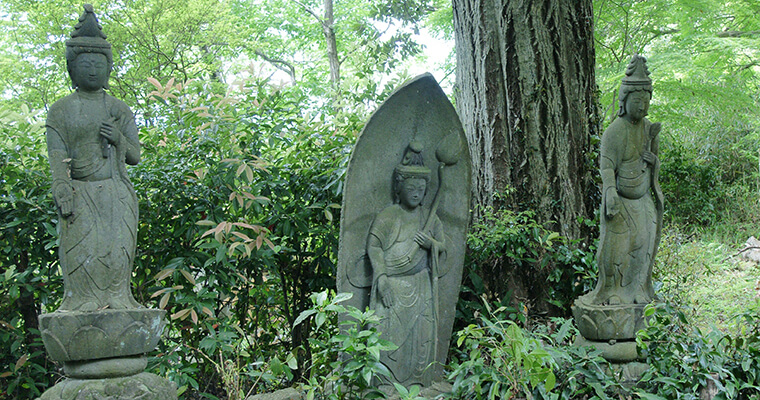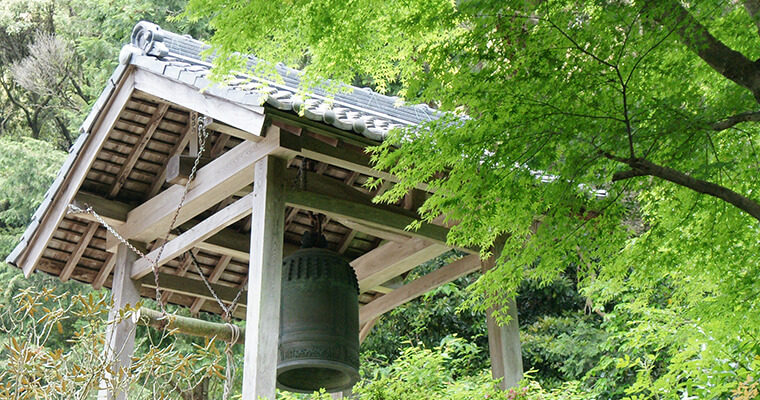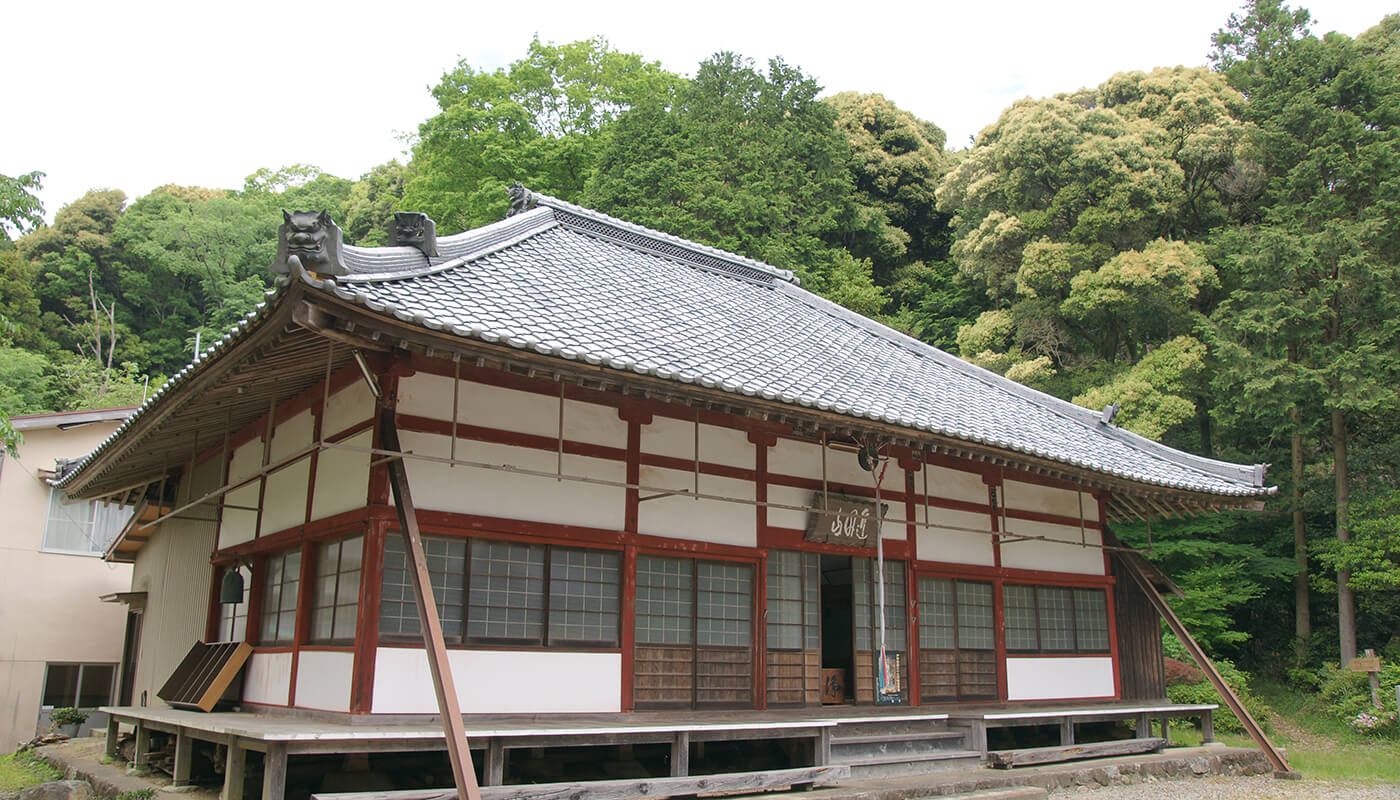Number 15Chōkoku-ji temple
History of the temple
Chōkoku-ji temple was founded between 701 and 704 by a monk called Tokudō. Because it was modeled after Hase-dera temple (the characters it is written with can be also read as Chōkoku-ji) in Nara, it is also referred to as Enchōkoku-ji (Far Chōkoku-ji).
It is believed that the temple was a praying place for Sasaki clan and the clan of provincial governors Kitabatake. Unfortunately the temple lost its records in fires caused by frequent wars of the 16th Century, and almost seized to exist. It was rebuilt by a 2nd daimyo of Tsu province Tōdō Takatsugu (1602-1676) and since then the temple became an important praying place for all next generations of Tōdō clan.
The original main statue enshrined in Chōkoku-ji temple was the 7.9m (25ft11in) high Jūichimen Kannon (Eleven-Faced Kannon). It was one of many Japanese big size Buddhist statues, but unfortunately it was almost completely destroyed during the war in Tenshō period (1573-1592). The statue burned down together with the temple during the fight with the troops of the first “Great Unifier” of Japan – Oda Nobunaga (1534-1582). Currently the remnants of Jūichimen Kannon are wrapped in white clothes and shown to the public only once per 18 years.
The current main statue of the Chōkoku-ji temple is a life-size standing Jūichimen Kannon. It is made from wood and covered with dark brown lacquer. The statue was carved at the beginning of the 17th Century.
Six Kannon statues (Kannon in six basic forms to protect people in each of the Six Realms of karmic rebirth) and a statue of Bishamon (God of Treasure, Wealth, & Warriors) all made from stone stand within the temple’s grounds, just at the end of the road leading to the temple. It is said that these statues were made in Korea during the ruling of Joseon dynasty and brought from Korean peninsula by Tōdō Takatora (1556-1630).
Seiyōzakki
Kindenzan Chōkoku-ji resides 2 ri west from Tsu in a mountain of Hase village. The main statue is a Jūichimen Kannon (Eleven-Faced Kannon). It is said that the temple was founded by Tengai of Tōfuku-ji temple after moving from Hase in Yamato province. At the beginning there were many buildings in its precinct and the temple’s land was worth 80 kan but after the turbulent times of Tenshō period it fell into ruin. The temple’s buildings had no thatch roof anymore, no sound coming from the inside and no light, even a vague one, could be seen. It is a temple number 13 of Ise Pilgrimage.
No matter how many times you go to pray, my heart is pure like the clean valley water as it was the first time I visited this place.

Outline
-
Honorific name
Kindenzan
-
Temple's name
Chōkoku-ji
-
Sect
Rinzai Shōkoku-ji branch
-
Religious service
Jūichimen Kannon
(Eleven-Faced Kannon)

Details
-
Address
Mie Prefecture Tsu Katada Hase-cho 230
-
Phone number
059-237-2648
-
Stamp place
Temple's counter
-
Opening hours
8:00 - 17:00
-
Official website




